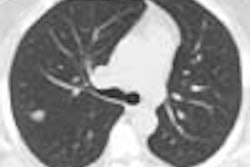By Thomas J. Barrs, PharmD, BCNSP
I am a clinical pharmacy specialist in a metropolitan medical center. Two years ago, while performing a medication utilization review (MUE) for the drug metformin, an important issue came to light.
Part of the MUE sought to determine whether metformin was being used appropriately for patients who had received intravascular iodinated radiopaque medication (IIRM; intravascular radiocontrast). This analysis, of course, is appropriate due to increased risk for development of lactic acidosis if metformin therapy is not halted at the time of IIRM administration, and resumed only if renal function is determined to be normal after 48 hours.
While reviewing the medical record of a patient scheduled to receive a dose of metformin that evening, I noticed a physician order for a CT study. But based on the patient’s medical record, I was unable to determine whether IIRM was administered during the CT study or, indeed, even if the study yet had been performed.
After a telephone call to the imaging department, I discovered that the CT study had been done and that iohexol had been administered intravenously. It occurred to me that, in effect, medications routinely used during imaging procedures are not considered drugs by radiologists, imaging departments, and, ultimately, medical institutions. Why did I have to make a telephone call to determine that IIRM had been administered to this patient? Why wasn’t this information included on the medical record? The answers to these questions are of far-reaching importance.
In a recent article for the American Journal of Health-System Pharmacy, I elaborated on the reasons that drugs used along with imaging studies and procedures must be formally prescribed and properly documented in the medical record in real time ("Establishing Safeguards for the Use of Imaging-Related Drugs," American Journal of Health-System Pharmacy, August 1, 2002).
First, all contrast agents (even barium sulfate preparations), radiopharmaceuticals, and adjunctive agents, such as cholecystokinin or glucagon, are drugs. I prefer to call them drugs or medications, rather than agents, in order to stress the point. These medications carry the Rx label ("prescription only") and are considered drugs by way of long-established legal and scientific principles. In the final analysis, it is the responsibility of radiologists to prescribe imaging-related drugs, regardless of any requests on behalf of the referring physicians.
Therefore, the radiologist must provide a formal prescription before an imaging-related drug is administered. The prescription must be written, signed by the radiologist, and included in the medical record in real time. Additionally, real-time documentation of the event of the drug’s administration must be recorded in the medical record. It should include the drug, the dose (including concentration or strength), date, time, and name or initials of the person who administered the drug.
Merely mentioning the drug’s administration as part of a dictated report that is incorporated into the medical record days later is inadequate. In fact, the practice constitutes "pseudo-documentation" because it does not include all the essential information mentioned above and is not done in real time.
One issue that may be of concern is that of the radiologic technologist’s authority to administer drugs or transmit or receive verbal orders from physicians. But RTs often administer such drugs. Examples include intravenous administration of radiocontrast and paramagnetic agents.
If the patient has risk factors for adverse outcomes with an imaging-related drug," my understanding is that before proceeding further, the RT should seek a decision from the radiologist. The radiologist's decision constitutes a verbal order, whether it is to administer the drug in question or not. If no risk factors are uncovered and the drug is administered without consulting the radiologist this too denotes a verbal order. If the RT is not licensed to administer drugs, then the reluctance to document a drug’s administration is understandable, yet remains questionable. A verbal order should in every case be written in the medical record in real time and subsequently signed by the radiologist. Alternatively, the radiologist must actually write the order in real time.
The pharmacist is duty-bound to evaluate patients for appropriateness of drug use. Pharmacist evaluation should extend well beyond the determination of patient food and drug allergies, and into the realm of assessment of organ function and pathologic factors that might interact with pharmacotherapy.
For example, in a patient being evaluated for IIRM administration, if more than one determination of serum creatinine concentration is available (i.e., serial levels) then one must evaluate the trend. A single measurement of serum creatinine concentration, albeit within the normal range, can represent a marked deterioration of renal function. I suspect that for many patients, medical history and a single serum creatinine level constitute the entire evaluation for appropriateness of IIRM administration.
Unfortunately, because the pharmacist is generally excluded from this loop, important contributions to the use of imaging-related medications are woefully lacking. I believe that the RT, radiologist, pharmacist, and institution are liable. We run the risk of participating in a method of drug delivery that is at best improper, and, at worst, fraught with legal and ethical concerns.
The matter of patient safety is obvious. Because these medications have historically been administered without real-time documentation in the patient’s medical record, clinical awareness of consequential adverse events is dreadfully impaired. If a patient who received IIRM a day or two earlier now is developing IIRM-induced renal impairment, then the etiology of the nephropathy may not be discerned.
There is an historically conditioned and profound impairment of awareness surrounding the use and potential adverse consequences of imaging-related drugs. Along with proper documentation and prescribing, we urgently need to provide education for clinical practitioners so that these drugs will be properly incorporated into pharmacotherapeutic decision-making. The pharmacist is naturally and skillfully poised to work with radiologists and imaging professionals to provide this training.
I am hopeful for the development of open and beneficial relationships between radiologists, imaging professionals, and pharmacists for improvement of patient health and safety.
By Thomas J. Barrs, PharmD, BCNSPAuntMinnie.com contributing writer
October 8, 2002
Thomas J. Barrs is a clinical pharmacy specialist in the department of pharmaceutical services, DeKalb Medical Center, Decatur, GA. For a reprint of his article, "Establishing Safeguards for the Use of Imaging-Related Drugs," please contact Barrs at 404-501-5733 or at [email protected] and [email protected].
Copyright © 2002 AuntMinnie.com


















